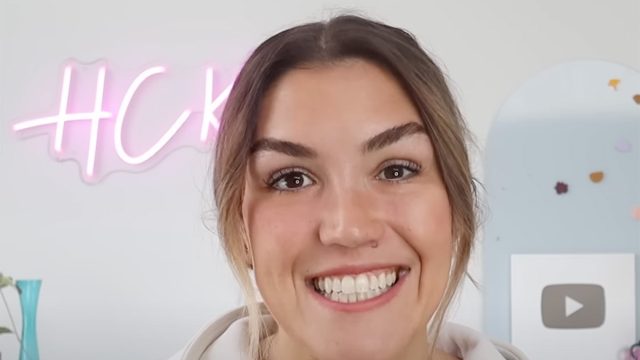Nutritionist Reveals 4 Signs You're Eating Too Much Fiber

That morning bowl of high-fiber cereal followed by a fiber-rich salad for lunch might not be serving your body as well as you think. While most health advice pushes for more fiber, certified health and nutrition coach, Kait Malthaner reveals that excessive fiber intake could be behind your digestive troubles. With her expertise in blood sugar management and gut health, Kait shares surprising insights about fiber that might change how you think about this supposedly essential nutrient.
The Surprising Truth About Fiber Requirements
"Our bodies do not actually need any fiber in order to function properly, not even for bowel movements," Kait explains in her recent analysis of fiber intake. While she acknowledges that fiber can help regulate blood sugar and increase satiety, she emphasizes that it isn't an essential nutrient. "By definition, because it is impossible to be fiber deficient, it isn't considered to be essential," she notes.
Understanding Your Body's Response to Fiber
Before diving into the warning signs, it's important to understand the two main types of fiber affecting your digestion. "There are two main types of fiber: soluble and insoluble," Kait explains. "Soluble fiber dissolves in water and forms a gel-like substance. It is found in foods such as beans, oats, citrus fruit, and some vegetables. Insoluble fiber does not dissolve in water and it adds bulk to your stool. It is found in foods such as whole grains, potatoes, and leafy greens."
RELATED: She Lost 40 Pounds and Kept It Off with These 5 High-Protein Breakfasts
Sign #1 Post-Meal Bloating That Isn't Normal
The first red flag of excessive fiber intake is persistent bloating after meals. "If you find that you are always bloated after you eat a meal, this can be a sign that you're eating too much fiber, soluble fiber in particular," Kait warns. She explains that when soluble fiber combines with water, it expands in the stomach, leading to bloating. While some bloating is normal, Kait emphasizes, "Let me just tell you, extreme bloating is absolutely not normal."
Sign #2 Frequent Gas and Digestive Discomfort
"If you are frequently gassy, this can be another indicator that you're eating too much fiber," Kait states. She explains why this happens: "Fiber is actually indigestible. Our bodies are not able to break it down, so it essentially goes through our digestive system untouched until it comes out the other side. But during this journey, gas can occur when the bacteria in intestines is processing it."
Sign #3 Unexplained Stomach Cramps
The third sign manifests as abdominal pain and stomach cramps, particularly in people with digestive conditions. "Especially for people with conditions affecting their digestive system such as IBS, eating too much fiber can cause abdominal pain and stomach cramps," Kait notes. These symptoms occur as your intestines struggle to process the excess fiber.
RELATED: 50+ Fitness Coach Swears by These 8 Foods to Stay Fit and Strong
Sign #4 Counterintuitive Constipation
Perhaps the most surprising sign is constipation. While fiber is often recommended to improve regularity, Kait shares a compelling research finding: "There was one study done on 63 people over six months where they compared a high fiber diet, a moderate fiber diet, and a zero fiber diet. In those with chronic constipation, the groups that reduced and eliminated the fiber saw improvements across the board… the no fiber group saw a 100% reversal in their symptoms."
Finding Your Personal Fiber Balance
"I find that most people do best eating less fiber than what traditional dietary recommendations suggest," Kait observes. She notes that fiber appears more beneficial for those consuming processed foods rather than those following a whole-food diet with adequate protein and fat.
When to Consider Reducing Fiber
According to Kait, "Low or no fiber diets, also known as low residue diets, are actually commonly prescribed to patients with chronic constipation, ulcerative colitis, and IBS, and these diets are extremely effective at reducing symptoms and inflammation in these conditions."
RELATED: 51-Year-Old Coach Loses 6 Sizes in 30 Days With 4 Simple Daily Habits
The Path to Better Digestion
The key isn't necessarily eliminating fiber entirely but finding your optimal intake level. As Kait concludes, there's a "sweet spot" for most people – lower than general recommendations but higher than zero. When you find this balance, you should experience comfortable digestion without the four warning signs discussed above.
This article has been crafted based on insights from certified health and nutrition coach Kait Malthaner's expert analysis of fiber intake and its effects on digestion. And if you enjoyed this article, don't miss Nutritionist Reveals 8 Signs You're Eating Too Many Carbs.




